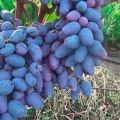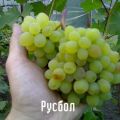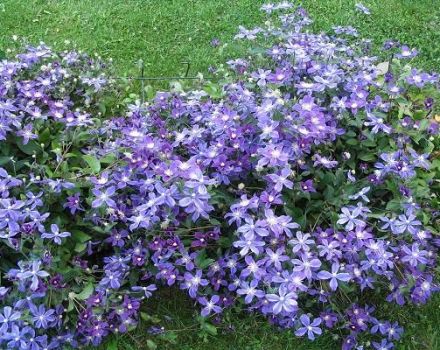Description of the Julian grape variety and yield characteristics, cultivation features
Since ancient times, grapes have been revered by many peoples; it was considered the berry of the Gods. It was used to make intoxicating drinks, medicinal infusions, and seed oil. Due to the high content of various types of sugars (glucose, fructose), organic acids, vitamins, macro- and microelements, it has an antibacterial, anti-inflammatory, antipyretic effect. The grapes were predominantly grown in the southern regions, but the wonders of modern selection allow the northern regions to enjoy the taste of the divine berry of grapes like Julian.
Breeding history
The Julian variety was bred by the folk breeder experimentally by Vasily Ulyanovich Kapelyushny. In the farm of the Rostov region by crossing the varieties Kesha and Rizamat. Julian took beautiful large bunches from Rizamat grapes, which, when ripe, change color from green-yellow-pink to dark pink. Also high yield and early ripening and sweetness of the berries. From the Kesha variety, Juliana's grape bunches have adopted unpretentiousness to growing conditions, frost resistance, unsurpassed taste and resistance to diseases.
Description of Julian grapes
The Julian grape belongs to hybrid varieties, bred 16 years ago, characterized by:
| Characteristic | Description |
| Ripening period | Early, brushes ripen in 90-105 days |
| Adaptation and rooting | Quickly adapts and takes root |
| Soil selection and care | Unpretentious |
| Diseases | Resistant to many diseases, especially fungal |
| Harvest | Abundant, starting from 3-4 years |
| Commodity qualities | Long-term storage, hardly wrinkled during transportation |
| Vine growth | Fast |
| Frost resistant | -23 ... -25 ° C |
In 2011 he received the Golden Bunch award for its quality characteristics. Below is a description of the Julian grape variety.
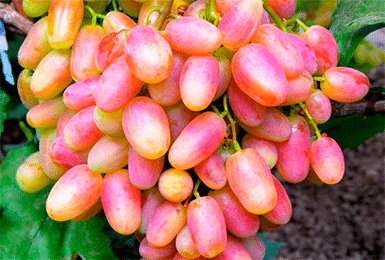
Grape clusters grow weighing from 0.9 kg to 2 kg, the shape of the berries is finger-shaped, elongated-oval. One berry weighing up to 20 g, has a light musk aroma and a sweet-nutmeg flavor. The skin is thin, crispy when cut, the pulp is dense, with 3-5 seeds. The bunch is cylindrical or shapeless, slightly loose, up to 40 cm in length. Vines grow up to 4 m in height in central Russia. Julian belongs to the table grape varieties, has a long stem and bisexual flowers.
Pros and cons
Like all varieties, Julian has its pros and cons, although there are more advantages than disadvantages.
Minuses:
- Choosing a landing site.Of great importance in the ripening period is the choice of a sunny place, without drafts and closely located groundwater.
- Sharp weather changes from plus to minus can damage young vines, although this variety is considered frost-resistant.

Pros:
- Long-term storage of brushes that do not deteriorate externally.
- Resistant to mildew and other fungal diseases.
- Delicious, large, sweet berries, without bitterness.
- It grows quickly and adapts to new conditions.
- Wasps are not attacked.
- Fruiting of signal brushes begins from the 2nd year of the seedling's life.
- It tolerates hot, dry summers.
- The harvest is early and abundant.
Julian is one of the best varieties suitable for fresh and processed consumption: jam, juice, wine, raisins, compote, jam, marmalade.
Variety characteristics
Julian took the best qualities of the parent plants, it can be called a new generation variety:
- Sugar accumulation up to 28%.
- Unpretentious in the selection of neighboring plants.
- Compatible with most varieties and rootstocks.
- Requires constant pruning due to abundant harvest and heavy bunches.
- Self-fertile variety, flowers are bisexual.
- Depending on the size and age of the bush, 4-10 kg are harvested.
- Shelf life of bunches without losing their appearance up to 20 days
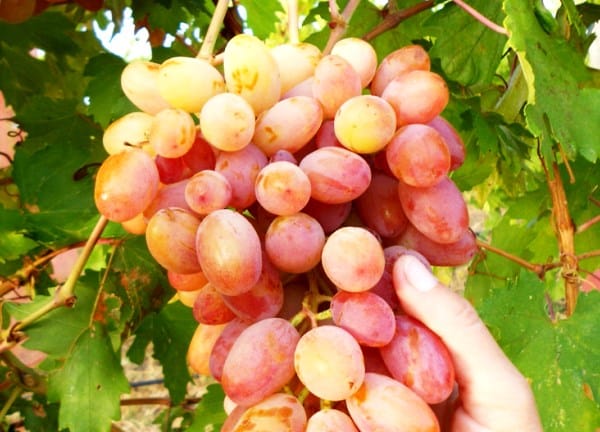
Thanks to its qualities, the bushes can be grown not only by professionals, but also by amateurs.
Ripening terms
The very early Julian variety begins to bloom in the middle of May, the inflorescences bloom for 7-14 days, by the middle of August you can get mature brushes. From the moment of flowering to ripe berries, it takes 90-105 days.
Planting and leaving
Saplings or cuttings should be planted in the southern regions in autumn (September to early November), in spring (April-May), in the northern regions, planting is most successful in spring from early May to the first half of June:
- Plot. Sunny (south, southeast), with strong supports, windless.
- The soil. Preferably sandy loam, with deep groundwater or well-drained.
- Pruning. Carried out in the fall, unripe green vines are cut. Spring is carried out in order to remove frozen shoots and the formation of fruitful branches.

Landing is carried out in several stages:
- Pit preparation, width and height should be 1.5-2 times larger than the root system.
- Put a layer of drainage on the bottom, and then add a mixture of soil with organic fertilizers on top.
- Water the hole abundantly, but so that there is no stagnation of water.
- Plant a seedling, sprinkle with soil mixture, press down a little.
A small depression should be left around the bush and a groove should be made to drain excess water. Cuttings are planted in the same way as seedlings, but at an angle of 40-50 degrees.
In spring and autumn, for better adaptation and wintering, the plants should be fertilized with nitrogen fertilizers, during the period of brush formation, fertilized with phosphorus-potassium complexes.
It is important to prune stepchildren and extra brushes in the summer so that the grapes are poured faster and the vine does not break from the severity of the bunches.
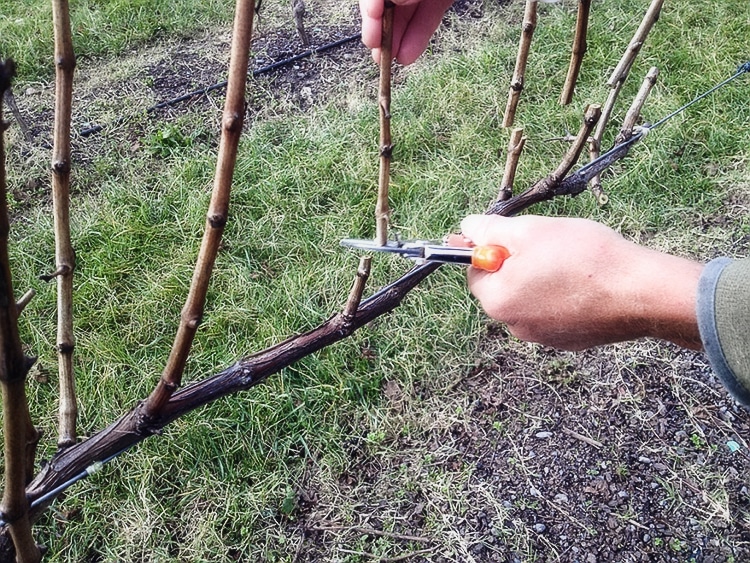
Diseases and pests
The variety has strong immunity to most diseases, but you should not skip preventive spraying. The first spraying is carried out in the spring when the buds appear, and also in the fall, after harvesting. Just like other grape varieties, if agricultural technology is not followed, they can be attacked: anthracnose, alternaria, gray rot, oidium, mildew.
The main grape pests - birds and wasps, but if a frightening net is stretched over the plant and the berry is not cracked, then it will not attract their attention. Also a dangerous pest: phylloxera, grape mite, marble beetle. These pests must be dealt with quickly and efficiently, since their spread can lead to the death of the entire vineyard.
The best regions to grow
The Julian variety is quite young and is still being tested in the northern regions. It grows without shelter for the winter in the Crimea, Krasnodar Territory, Rostov, Astrakhan regions, the Republics of Kalmykia and Adygea. According to gardeners' lovers, it is safely grown in Moscow, Moscow region, South and Central Siberia, but young seedlings require shelter for the winter.
For any grape variety, the agrotechnical growing conditions must be observed, then it will be possible to get a bountiful harvest and successfully overcome the winter cold.




